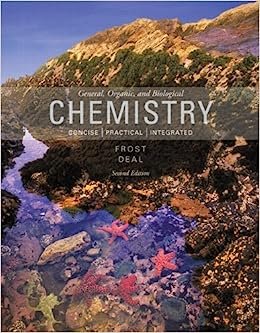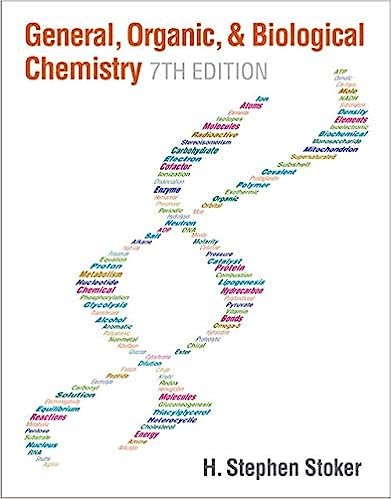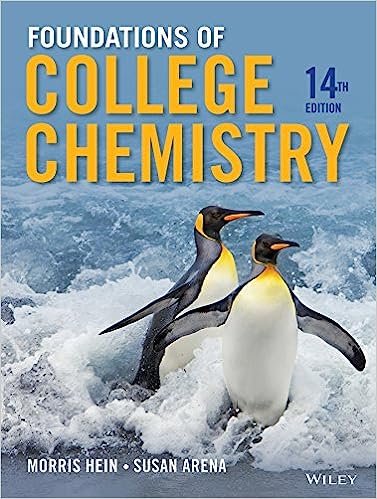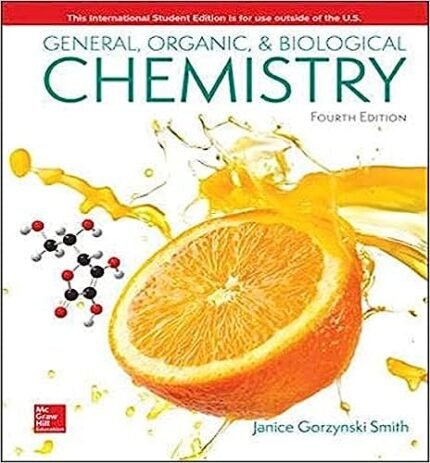Test Bank For General Organic And Biological Chemistry 3rd Edition By Janice Smith
Chapter 05
Chemical Reactions
Multiple Choice Questions
- The law of conservation of mass states that
A.atoms cannot be created or destroyed in a chemical reaction.
B. molecules cannot be created or destroyed in a chemical reaction.
C. compounds cannot be created or destroyed in a chemical reaction.
D. heat cannot be created or destroyed in a chemical reaction.
Bloom’s Level: 1. Remember
Difficulty: Easy
Gradable: automatic
Subtopic: Types of Chemical Reactions
Topic: Chemical Reactions
- The Greek letter delta (D) may be written over the reaction arrow in a chemical equation to indicate that
- heat is generated when the reaction occurs.
B. a catalyst is needed for the reaction to occur.
C. water is needed for the reaction to occur.
D. heat is needed for the reaction to occur.
Bloom’s Level: 1. Remember
Difficulty: Easy
Gradable: automatic
Subtopic: Writing and Balancing Chemical Equations
Topic: Chemical Reactions
- Which chemical equation is properly balanced?
A.
SO2 + O2 + H2O ® H2SO4
2 SO2 + O2 + 2 H2O ® 2 H2SO4
SO2 + O2 + 4 H2O ® 2 H2SO4
4 SO2 + O2 + 4 H2O ® 4 H2SO4
Bloom’s Level: 2. Understand
Difficulty: Easy
Gradable: automatic
Subtopic: Writing and Balancing Chemical Equations
Topic: Chemical Reactions
- In the chemical equation 2 Co(NO3)3 + 3 (NH4)2S ® Co2S3 + 6 NH4NO3 , how many nitrogen atoms are on each side of the equation?
- 2
B. 3
C. 6
D. 12
E. 16
Bloom’s Level: 2. Understand
Difficulty: Medium
Gradable: automatic
Subtopic: Writing and Balancing Chemical Equations
Topic: Chemical Reactions
- Write a balanced chemical equation for the reaction of acetone (C3H6O) with oxygen (O2) to form carbon dioxide (CO2) and water (H2O).
A.
C3H6O + O2 ® CO2 + H2O
C3H6O + 4 O2 ® 3 CO2 + 3 H2O
3 CO2 + 3 H2O ® C3H6O + 4 O2
6 C3H6O + 8 O2 ® 6 CO2 + 6 H2O
Bloom’s Level: 2. Understand
Difficulty: Medium
Gradable: automatic
Subtopic: Writing and Balancing Chemical Equations
Topic: Chemical Reactions
- How many carbon atoms are in 3.85 mol of carbon?
A.3.85 carbon atoms
B. 23.2 carbon atoms
C. 6.02 ´ 1023 carbon atoms
D. 2.32 ´ 1024 carbon atoms
E. 6.40 ´ 10–24 carbon atoms
Bloom’s Level: 5. Evaluate
Difficulty: Easy
Gradable: automatic
Subtopic: The Mole (Definition and Avogadro’s Number)
Topic: Chemical Calculations
- How many iron atoms are in 0.32 mol of Fe2O3?
A.3.9 ´ 1023 iron atoms
B. 3.9 iron atoms
C. 6.02 ´ 1023 iron atoms
D. 1.9 ´ 1023 iron atoms
E. 1.1 ´ 10–24 iron atoms
Bloom’s Level: 5. Evaluate
Difficulty: Medium
Gradable: automatic
Subtopic: The Mole (Definition and Avogadro’s Number)
Topic: Chemical Calculations
- How many moles of chloroethylene (C2H3Cl) contain 5.47 ´ 1026 molecules?
A.3.29 ´ 1050 mol of C2H3Cl
B. 5.47 ´ 1026 mol of C2H3Cl
C. 909 mol of C2H3Cl
D. 5450 mol of C2H3Cl
Bloom’s Level: 5. Evaluate
Difficulty: Medium
Gradable: automatic
Subtopic: The Mole (Definition and Avogadro’s Number)
Topic: Chemical Calculations
- What is the formula weight of KCl?
A.74.55 amu
B. 66.42 amu
C. 36.00 amu
D. 1386 amu
Bloom’s Level: 5. Evaluate
Difficulty: Easy
Gradable: automatic
Subtopic: Molar Mass
Topic: Chemical Calculations
- What is the formula weight of Co(NO3)3?
A.88.94 amu
B. 244.96 amu
C. 216.94 amu
D. 148.96 amu
E. 196.96 amu
Bloom’s Level: 5. Evaluate
Difficulty: Medium
Gradable: automatic
Subtopic: Molar Mass
Topic: Chemical Calculations











Reviews
There are no reviews yet.